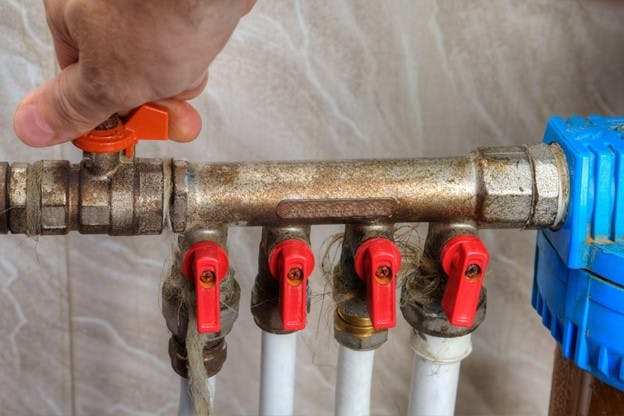Are you currently trying to find content involving 4 Ways to Troubleshoot Low Water Pressure?

Low water pressure in your home can be an aggravating trouble, influencing whatever from bathing to cleaning meals. If you're experiencing weak water flow, there are several possible causes and solutions to discover. In this guide, we'll discuss typical factors for low tide pressure and useful steps to address the issue successfully.
Introduction to Low Tide Stress
Low tide stress occurs when the circulation of water from your faucets, showers, and various other fixtures is weaker than usual. This can make daily tasks a lot more difficult and much less reliable. Understanding the causes of low tide pressure is important to finding the appropriate service.
Common Sources Of Low Water Stress
Pipeline Obstructions
Gradually, pipes can end up being obstructed with natural resource, debris, or particles, restricting the circulation of water. This is an usual problem in older homes with galvanized steel pipes.
Rust
Rust within pipes can cause leaks and reduced water stress. Corrosion build-up can tighten water flow, especially in maturing plumbing systems.
Faulty Pressure Regulators
Pressure regulators are in charge of preserving consistent water pressure in your house. If they malfunction, it can result in low water stress or uneven circulation throughout your house.
Local Supply Of Water Issues
Often, the issue exists outside your home. Metropolitan water system problems, such as main line leakages or upkeep work, can momentarily reduce water pressure in your area.
Just How to Identify Low Tide Stress
Examining Faucets and Components
Begin by examining the water pressure at different faucets and components throughout your home. If the problem is separated to particular areas, it may show localized problems.
Examining Pipelines
Evaluate noticeable pipelines for indicators of leakages, rust, or clogs. Take note of any uncommon noises, such as knocking or rattling pipelines, which could indicate concerns within the plumbing system.
Consulting with a Plumber
If you're unable to pinpoint the source of low tide pressure, think about hiring an expert plumber to carry out a thorough examination. They can recognize underlying issues and advise suitable solutions.
DIY Solutions to Deal With Low Water Stress
Cleaning Aerators and Showerheads
Natural resources can accumulate in aerators and showerheads, decreasing water flow. Remove and clean up these elements on a regular basis to enhance water pressure.
Flushing Water Heater
Debris build-up in the hot water heater can restrict circulation and reduce efficiency. Purging the storage tank occasionally assists get rid of debris and preserve optimum efficiency.
Checking Stress Regulatory Authority
Make sure that the pressure regulatory authority is functioning appropriately. Adjusting or replacing the regulatory authority can aid recover proper water stress throughout your home.
Cleaning Clogs in Piping
For small clogs, attempt utilizing a plumbing serpent or chemical drain cleaner to clear obstructions in pipelines. Be cautious when utilizing chemicals and adhere to safety guidelines.
When to Call an Expert Plumber
If DIY initiatives fail to solve the concern or if you suspect considerable plumbing troubles, it's best to seek help from an accredited plumber. They have the knowledge and tools to resolve complicated problems safely and properly.
Preventive Measures to Preserve Water Pressure
Normal Upkeep
Schedule regular upkeep for your plumbing system to prevent issues such as deterioration, leaks, and clogs. Resolving minor troubles early can assist avoid even more significant repair work in the future.
Installing a Stress Booster
Take into consideration installing a stress booster pump to enhance water stress in locations with consistently low circulation. This can be especially helpful for multi-story homes or properties with high-demand components.
Surveillance Water Use
Bear in mind water usage routines and stay clear of ill-using the plumbing system. Easy changes, such as staggering showers and laundry loads, can assist preserve ample water stress.
Conclusion
Taking care of low water stress can be aggravating, however recognizing the underlying reasons and carrying out suitable options can restore ideal circulation throughout your home. Whether it's cleaning aerators, inspecting pipes, or speaking with a plumber, taking aggressive steps can guarantee a constant supply of water for your daily needs.
FOUR WAYS TO FIX LOW WATER PRESSURE NOW
Turning on a shower or faucet only to find the water comes out in a sad, slow drizzle is never a good feeling. How exactly are you supposed to wash a pan or take a quick shower when it takes 10 minutes just to rinse off a little soap? The good news is that when your water pressure is bad, there's always a cause: typically one that can be easily fixed. Here are some of the most common causes of low pressure and what you can do to fix the issue:
DEBRIS AND MINERAL DEPOSIT BUILDUPS
If you notice low water pressure from just one or two of the fixtures in your house, the problem likely has to do with debris buildup. Water is full of minerals and other debris, all of which can accumulate in your pipes and on your fixtures. This can cause a blockage that affects how much water flows through. To fix this, try filling a small plastic bag with white vinegar, and use a rubber band to hang it around your showerhead or faucet. Let the head of the fixture soak for a few hours, and the vinegar should loosen the deposits.
WATER LEAKS
Leaks are another common cause of low water pressure. If water is flowing out of your plumbing through a hole or crack before it can reach your fixture, the pressure coming out of the faucet or showerhead will be lower. A plumbing professional is your best bet for finding and repairing a leak in your water supply pipes.
Leaks are another common cause of low water pressure. If water is flowing out of your plumbing through a hole or crack before it can reach your fixture, the pressure coming out of the faucet or showerhead will be lower. A plumbing professional is your best bet for finding and repairing a leak in your water supply pipes.
A VALVE ISSUE
If you have low water pressure throughout your home, check your main shut-off valve to make sure it's completely open. You may also want to see if there's a pressure-reducing valve installed. If there is, have a plumber help you adjust the settings to get the pressure you're looking for.
OTHERS USING WATER
Believe it or not, your low water pressure could be caused by your neighbors. If you notice low pressure at certain times of day, it may be because you and the people living next to you have similar schedules - when everyone is showering at the same time, the pressure will be lower in every home. Low pressure throughout the neighborhood may also be caused by an issue with your municipal water supply. If that's the case, call the supplier to see if they're working on the issue.
https://www.rotorooter.com/blog/water-leaking/low-water-pressure-fixes/

I was brought to that editorial on 10 Reasons for Low Water Pressure in Your House from an associate on our other blog. Sharing is good. Who knows, you will be helping someone out. Thanks for being here. Don't hesitate to check up our website back soon.
Click
Comments on “The Manual to Dealing with Low Water Pressure in Your Home”